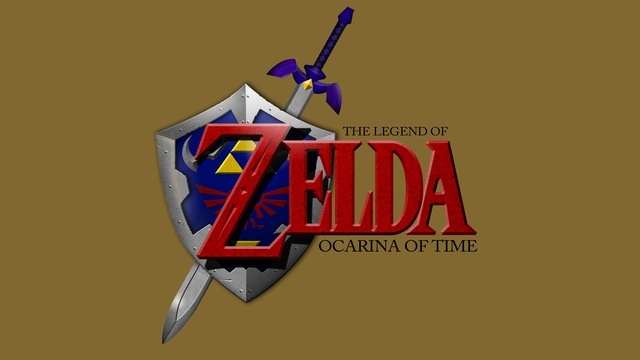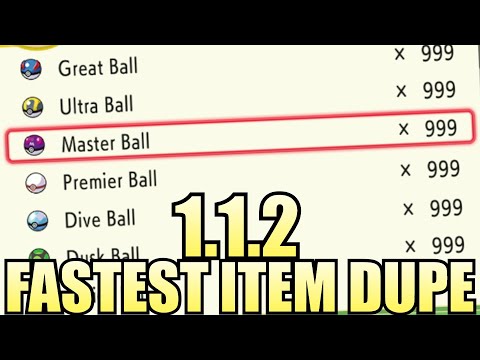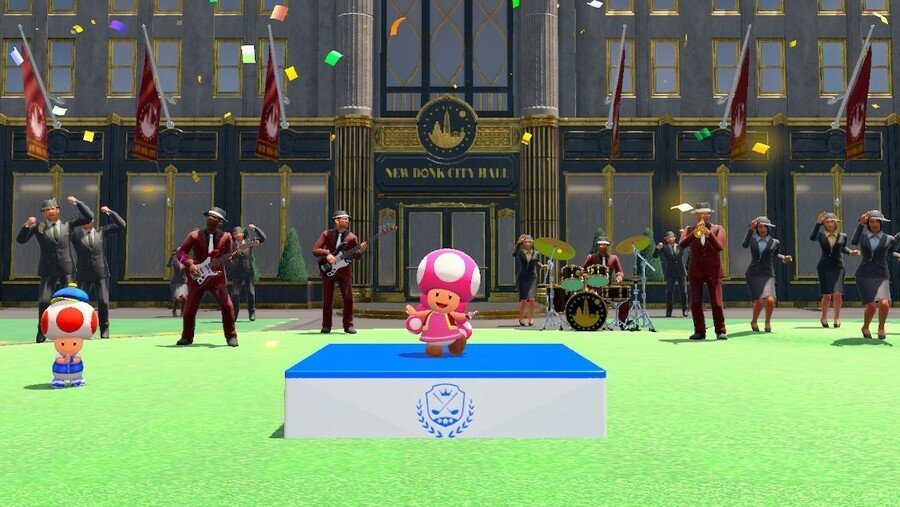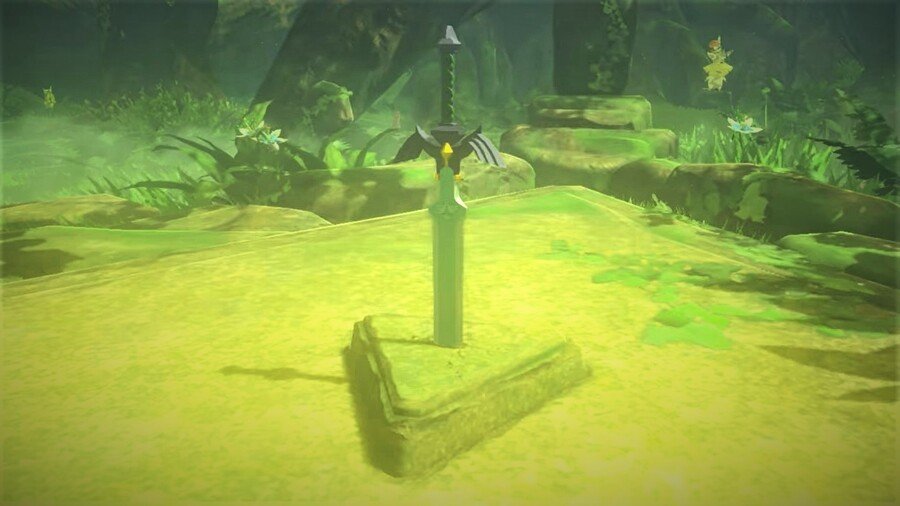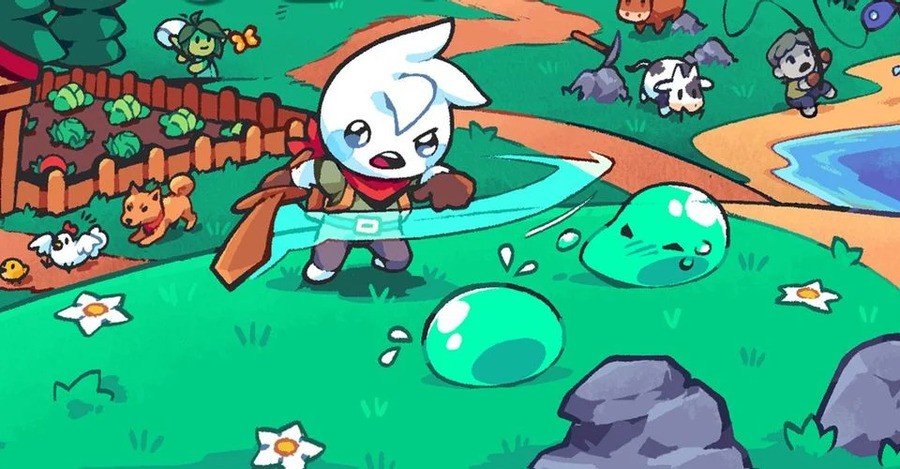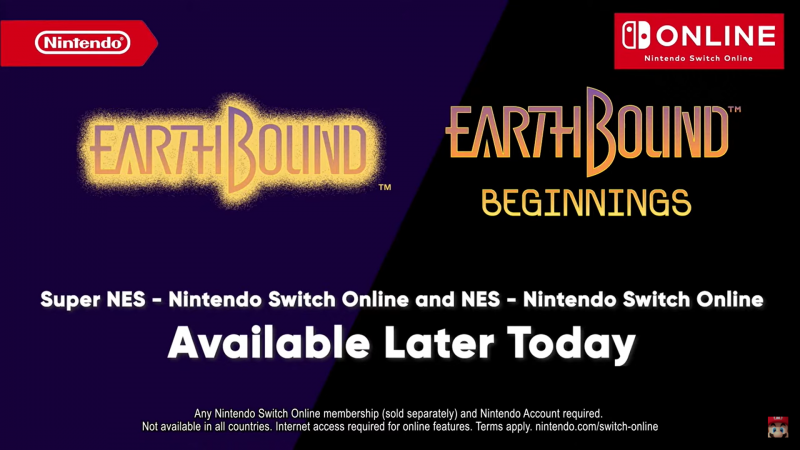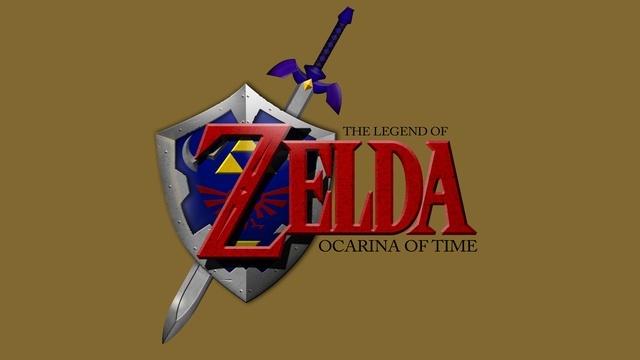
The Legend of Zelda is officially 35 as of this past Sunday, October 21. We’re going to spend the next week celebrating this incredible franchise and we’re kicking things off with this encore presentation of The History of The Legend of Zelda: Ocarina of Time!
Nintendo Space World 1995: Within the Makuhari Messe Convention Center near Tokyo, Japan, throngs of people had gathered at Nintendo’s seventh Shoshinkai video game trade show. Space World was essentially Nintendo’s own version of E3 where it would show off its upcoming games and consoles to countless fans who awaited the annual event with bated breath. Space World was a glimpse into what was new, what was next. That 1995 exhibition was no different. Nintendo 64 represented a monumental shift in how people would be playing video games for years to come, boasting three-dimensional graphics unlike anything that had come before it.
For Space World ’95, Nintendo staffers had worked hard to provide roughly twelve playable demos for fans to experience, but in the eleventh hour then-company president Hiroshi Yamauchi decided to pull all but two of them from the show floor. The move was polarizing among the development team members who had worked on the demos as well as the fans themselves, but Yamauchi was steadfast in his decision. He spoke about removing the demos at length not long afterwards, decrying the video game industry for, he believed, essentially just throwing games at the wall until one of them stuck. He wanted Nintendo 64’s debut to be focused and to show the system in the best light possible.
As such, the 1995 edition of Space World featured only two playable titles: Super Mario 64 (at about roughly 50 percent completion) and Kirby Bowl 64 (a title that eventually evolved into Kirby’s Air Ride on GameCube). Despite the limited selection of demos to play, fans were enthralled with Super Mario 64, in particular— its 3D environs and the extrapolation of Mario’s 2D adventures into the third dimension were truly stunning. While fans basked in the majesty of Super Mario 64‘s playable introduction, Nintendo had yet another equally important game to show off: Zelda 64.
The tech demo footage of Zelda 64 was masterminded by Takao Shimizu, a designer who had previously worked on multiple titles for Nintendo, including The Legend of Zelda: A Link to the Past. Shimizu was fascinated by the possibilities of a Zelda game on Nintendo 64, in particular the 64DD disc expansion which would be announced at the show, and created a demo focused on chanbara (Japanese sword fighting) for Space World ’95. It was, to say the least, mind-blowing for those in attendance. So much so that the magazine NEXT Generation was in disbelief and declared in its 29th issue that “the fact is that the videotape sequences shown at Shoshinkai bear very little resemblance to what the final product will actually look like.” Indeed, NEXT Generation went so far as to say that the demo footage would be “most likely to end up in cut-scenes rather than representing the actual play.”
How wrong they were. Zelda 64‘s epic Space World demo was very much representative of what the game would finally come to look like (in fact, it came to be much better than the demo), but in 1995 the footage was so astoundingly fluid and detailed that it defied reality. Video games simply didn’t look like that, even with the technically impressive Super Mario 64 on full display for all to see and offering a very compelling argument in Zelda 64‘s favor. Still, people were skeptical nonetheless that Zelda 64 wouldn’t end up being anywhere near as impressive as Nintendo was making it out to be. Zelda 64 was the stuff of fairy tales. In fairness, it was perhaps not an entirely unfair criticism, as the game was being promised for the fall of 1997— regardless of the fact that Shimizu’s demo was all that truly existed of the project!
In truth, though, Ocarina‘s roots go back much further than 1995— they actually started to spread around the time the idea for Super Mario 64 began to gestate. Designer Shigeru Miyamoto had plans for a 3D Mario game as far back as 1991. While conceptualizing and working on Star Fox, Miyamoto envisioned using the Super FX chip for SNES (a special graphics processor created to boost the processing power of the console) to create a small, 3D world for Mario to explore. Plans for that 3D Mario title never materialized on SNES, but they did eventually carry over to Nintendo 64. Yet even while working on a monumental game like Super Mario 64, Zelda was still in the back of everyone’s minds. Designer Yoshiaki Koizumi, who worked on both Super Mario 64 and Ocarina, revealed during an interview with the late-Satoru Iwata that as “we were making Super Mario 64, we were thinking about The Legend of Zelda the whole time.”
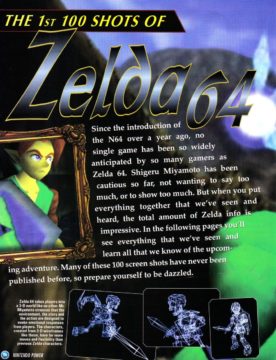
Development on Zelda 64 wouldn’t truly begin until after the completion of Super Mario 64. The team was initially comprised of just three people: Koizumi, Toru Osawa (at the time already a veteran director for Nintendo), and Jin Ikeda, a young designer. Although Shimizu was the brains behind the Space World demo, his days on Zelda 64 were done as he shifted over to Star Fox 64. For his part, Koizumi had been coming up with content for the title well before it officially began. “Even as I was making Super Mario 64, I would write down memos of what I wanted to achieve with The Legend of Zelda,” Koizumi continued. “Then when I started making [Zelda 64], I whipped out those memos and consulted them.” Koizumi elaborated further on the planning stages of Zelda 64, observing that of those ideas he’d jotted down, he wanted to include “[a]ll kinds of things, like battles using a sword and battling lots of enemies. The Super Mario 64 project had passed by incredibly quickly, so a lot that I wanted had gone undone and I wanted to pour all those leftover ideas into [Zelda 64].”
All of those ideas would require a lot more than three people to complete, so it wasn’t long before the team began to bring in more members. When all was said and done, Ocarina would ultimately require over 80 staffers to be completed, which was the largest number of workers any Nintendo game had ever needed up to that point. Everyone working on the game was producing a high volume of content and devoting many hours to the project. During Zelda 64‘s development, the myriad number of workers, while assigned particular roles, nevertheless found themselves fulfilling a range of different duties. Iwata noted that “boundaries between different jobs were vague back then. Most of the time, if you noticed something that needed to be done, you did it yourself.” Everyone was chipping in however they could in whatever capacity was needed.
One worker who was doing exactly that was designer Eiji Aonuma. Aounuma has become synonymous with the Legend of Zelda series in the years since Ocarina launched, but at the time he was still getting his feet wet with Nintendo. Aonuma had previous experience with the company, in particular working on a never-released game with the late-Iwata, but prior to Zelda 64 he wanted to really sink his teeth into an in-house project with Nintendo. “I spent a lot of time developing games with external companies. But I really wanted to develop inside Nintendo,” Aonuma noted to Iwata. “I pestered Miyamoto-san about it and he said, ‘We don’t have enough people for [Zelda 64], so come on in for a spell.’” While he is now seen as an integral part of Ocarina‘s development team, Aonuma was ironically actually the last person to join! His contributions were invaluable, however, as Aonuma “designed a total of six early and mid-stage dungeons, most of the enemy characters, and enemy and boss battles.”
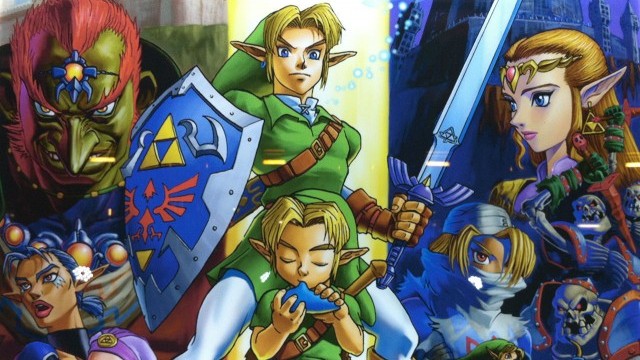
Although Shimizu had vacated the project before it ever even truly began, his impact on Zelda 64 was long lasting, as director Osawa was enraptured with his colleague’s focus on chanbara for the demo video. “I started writing the script with chanbara at the front of my mind, ” Osawa states. In an interesting turn, though, he wasn’t alone in his fascination with turning Link into a true swashbuckler, as Koizami, too, had a similar desire— and had even actually already worked on attempting to make such a thing into reality. “[B]efore Super Mario 64, I had actually been making Zelda II: The Adventure of Link in polygons with Miyamoto-san,” Koizumi said. “We were experimenting with a thin, polygon Link seen from the side and fighting with his sword. Chanbara was a pending issue at the time. We couldn’t really bring Zelda II: The Adventure of Link into form at that time, but I kept that desire to achieve a sword-fighting Legend of Zelda game until I joined this team.”
Before any sword-swinging and puzzle-solving were to be implemented in Zelda 64, however, there were more foundational questions that needed answering. “First, I talked with Miyamoto-san about how we should make The Legend of Zelda for the Nintendo 64 system,” Koizumi stated, “and he asked, ‘How about making it so that Link will not show up?’” Miyamoto’s vision for Link in Zelda 64 was as the player’s eyes, with the game to be played entirely from a first-person perspective. “[Miyamoto] had the image that you are at first walking around in first-person, and when an enemy appeared, the screen would switch, Link would appear, and the battle would unfold from a side-on perspective.”
To actually make this work on Nintendo 64, however, was a bit too tall of an order. “I knew that displaying a character constantly running around on a large field would be incredibly difficult. But – while it wasn’t very nice of me toward Miyamoto-san – I didn’t try a first-person scene even once!” It was more than just technical limitations that stymied Miyamoto’s initial vision for Zelda 64, though. “I was making the model for Link, so I couldn’t stand to see my Link not appear,” notes Koizumi. “Link is cool, so I wanted to always be able to see him.” That decision in and of itself led to further challenges during Ocarina‘s development.
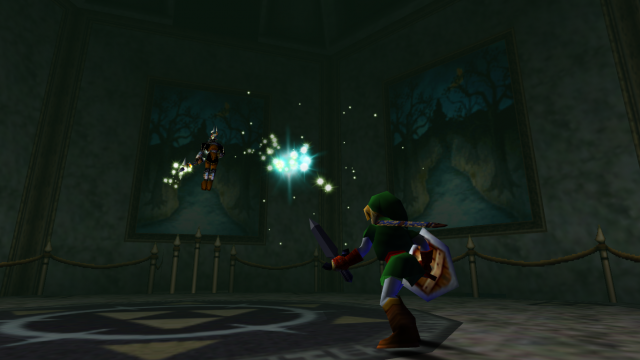
An element of Super Mario 64‘s design challenge that also eked into Zelda 64 was the need to invent solutions to problems that the designers had never encountered before. Super Mario 64‘s panning, 3D camera, in particular, was an integral element of that game, but it was something Nintendo had to think up on the fly, with no “rulebook,” so to speak, for reference. Similarly, in order to help keep players oriented while exploring the Mushroom Kingdom, shadows were placed under all floating objects regardless of lighting in order to better judge jumps. These solutions would carry over to Zelda 64, but they weren’t necessarily a catch-all for every 3D video game. As the team quickly came to find, all that swashbuckling they wanted Link to engage in wasn’t so easy to do with the same camera system as Super Mario 64.
Koizumi was joking when he said they never attempted first-person for Ocarina, as the team did play around with a setup like that for Zelda 64. That said, Osawa declared it was quickly deemed that “[the first-person viewpoint] wasn’t interesting visually and abandoned it right away.” This meant that the team had to come up with ways of portraying all of Link’s various actions, from firing a bow to riding a horse from a third-person view in a way that wouldn’t confuse players. “In order to solve those problems, we had to create a bunch of new devices, one of which was Z Targeting,” according to Koizumi. Interestingly, the inspiration for Z Targeting goes all the way back to Super Mario 64 despite that title not having a targeting system in it.
At first the design team was having trouble getting Mario to not walk in circles around signposts (a kink they eventually worked out). They had also been unable to come up with a satisfactory way for Mario to position himself to attack enemies directly in front of him. This problem was never fully overcome, mainly because it proved inconsequential in regards to making Super Mario 64 fun and playable. Combat in a Mario game is much simpler, after all, so the manner in which the plumber could lackadaisically leap and bop his foes on the head without any kind of targeting system was more than satisfactory to that team’s needs.
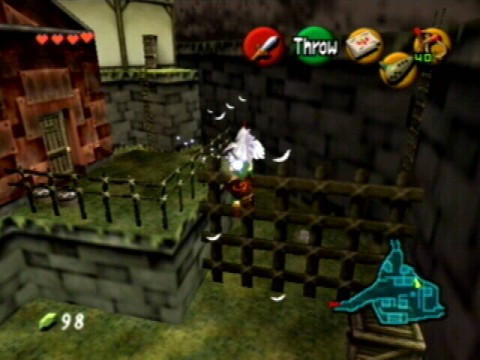
Zelda 64 was a different story altogether. Link’s adventures have arguably always been more focused on fighting than Mario’s and Zelda 64 would be the same. So, when that targeting issue that plagued Super Mario 64 cropped up again in Zelda 64, the designers once more struggled with how to conceive a resolution. They needed a way to allow players to focus on enemies during battle so that the skirmishes wouldn’t become dizzying, inscrutable messes on-screen. This was especially necessary because Link was to be fighting multiple opponents at once. Hitting a roadblock, in an effort to figure all of these things out, Osawa suggested that he and the team head to Japan’s Toei Kyoto Studio Park to gain a fresh perspective.
The park is home to actual movie productions, where over 200 films are shot every year, including many set during that country’s Edo period. Osawa felt the trip might inspire the team considering Zelda 64‘s use of chanbara. It turned out to be a brilliant decision on Osawa’s part. While at the park, he and the others inadvertently entered a playhouse to escape the heat and watched a staged fight of a samurai combating some ninja. Koizumi says that the fight fascinated him because, in real life, it wouldn’t be possible for the samurai to stave off 20 attackers, so how were they pulling if off for the performance?
As he kept observing the battle unfold, it dawned on Koizumi that the way the sword fighting was scripted, it required that each combatant engage the samurai one at a time. He realized that in order for Link to take on multiple foes, he’d need to script Zelda 64‘s battles in a similar fashion. “Watching that show at the studio park was a clue toward solving that problem. Z Targeting flags one particular opponent, telling the other enemies to wait.” Z Targeting allowed the action to center around a single enemy and make the fights both visually arresting and easy for the player to interpret. Z Targeting became the lynchpin of Zelda 64‘s control scheme and camera system, but it wasn’t complete without a very special element: the character Navi, Link’s fairy companion throughout the game.
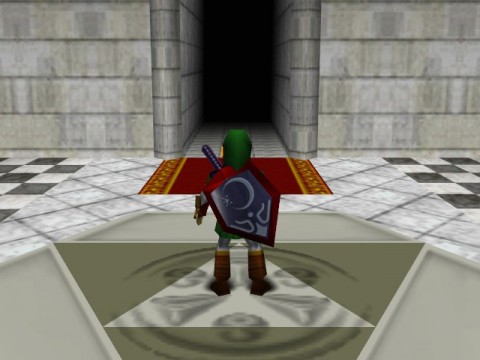
“When we were making a prototype of battle targeting, we wanted to make it easy to see which enemy you’re targeting, so we made a marker. An upside down triangle,” states Koizumi. “But I was a designer, so I didn’t want to use such a simple marker. I wanted to make something else, so I came up with a fairy. After all, it was The Legend of Zelda. …Usually, if you were to make a fairy, you would make a cute girl, but that wasn’t possible with the Nintendo 64 system, so I just made a ball of light with wings.” Koizumi continues, saying “I called it the Fairy Navigation System, took it to Osawa-san, and asked, ‘How’s this?’ He immediately said, ‘Let’s name it Navi.’ Because she navigates!”
It might seem like a name that’s too on-the-nose, but for Osawa it was part of a grander naming tradition within the Legend of Zelda series. “The Legend of Zelda games have a lot of names that show their origin. Link means to bind together. We give a lot of names that serve as functional symbols,” Osawa reflected. “I didn’t just name her Navi out of my simple sense for naming. Rather, I thought I should name her that way out of respect for the Legend of Zelda naming tradition.” What’s more, by naming what was ostensibly nothing but a navigation marker, the team was able to broaden the storyline within the game itself and build an emotional tether for Link and the player to become connected to.
In terms of functionality, however, Navi was even more critical. Not only did she allow players to lock onto enemies and pieces of the game environment, she also gave a means of providing the player crucial information throughout the adventure. Navi relayed important text acting as the intermediary between Link, the player, and the game world. What’s more, Navi also conveyed context behind all of the different enemies and characters Link encountered by using color to designate threats and non-threats. Navi and Z Targeting remain one of the most quintessential additions to the video game design toolbox. Even now, iterations and variants of both remain a constant within the industry.
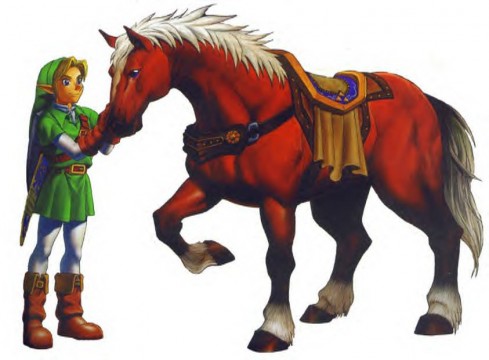 Z Targeting and, in turn, Navi, certainly helped pave the way for Zelda 64‘s continued development, but her introduction also resulted in some strife among the staff. By bringing Navi into the fold it opened all sorts of new narrative opportunities, but this meant that Osawa, who was handling the story, had to constantly make changes. These changes caused some headaches for everyone involved. “We got into it every day,” Osawa noted. “I would write the script and everyone would point out problems, saying, ‘This is weird,’ and ‘That’s impossible.’ Then I’d come up with a revised script and say, ‘I changed this. What do you think?'” It’s a wonder that development of Zelda 64 never completely collapsed in upon itself given how many things would be altered throughout the process.
Z Targeting and, in turn, Navi, certainly helped pave the way for Zelda 64‘s continued development, but her introduction also resulted in some strife among the staff. By bringing Navi into the fold it opened all sorts of new narrative opportunities, but this meant that Osawa, who was handling the story, had to constantly make changes. These changes caused some headaches for everyone involved. “We got into it every day,” Osawa noted. “I would write the script and everyone would point out problems, saying, ‘This is weird,’ and ‘That’s impossible.’ Then I’d come up with a revised script and say, ‘I changed this. What do you think?'” It’s a wonder that development of Zelda 64 never completely collapsed in upon itself given how many things would be altered throughout the process.
For instance, one of the hallmarks of Ocarina is the time travel that sees Link switch between his child and adult forms. What’s astounding is that mechanic didn’t appear until the second year of development! “At first, we were just going to have him in an adult form. If you think about the chanbara element, that only made sense. With a child form, the sword would be small and his reach too short, so he would be at a terrible disadvantage, especially against large enemies,” Osawa recalls. “But partway through development, Miyamoto-san and others on the staff started saying they wanted to see a cute little Link. …[W]e thought about how we could have both the child and adult forms appear in the same game and came up with the device of going seven years into the future by drawing the Master Sword and then returning back to his child form when he returns it to the pedestal.”
The post Zelda 35: The History of <em>The Legend of Zelda: Ocarina of Time</em> appeared first on Nintendojo.
